The Japanese Futon Culture
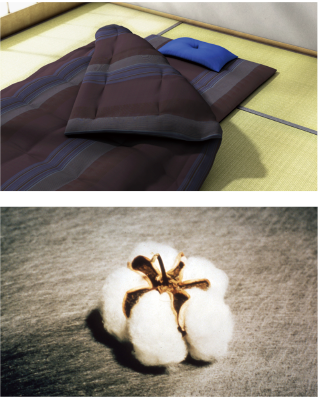
What is known as the “futon” in America is quite different from its Japanese namesake. The term actually refers to the square shikifuton (mattress) and kake-futon (comforter) bedding styles. The mattress and comforter futons of today have their roots in the Edo period (1603-1868). During the ancient Muromachi period (1336- 1573), it is said that people used to spread a tatami mat and sleep on it wearing a kimono. Yogi, or nightwear with collars and sleeves, made their first appearance during the Azuchi-Momoyama period (1573-1600), and cotton-stuffed yogi are said to be the earliest form of the futon. Much like the modern day comforter futon, people would cover their bodies with yogi with their arms through the sleeves when sleeping. The term “futon” during this time period referred to the mattress style, however, cotton was still a luxury item and commoners usually slept on straw. The yogi completed its transition into a comforter mid-Edo period. Even during the Meiji period (1868-1912), cotton futons were only used by a handful of the wealthy, while commoners used comforters stuffed with burlap sacks, shoji paper, or grass. The cotton-stuffed comforter gained popularity with time, soon becoming a household item. During the Taisho and Showa periods (1912-1989), it was common to buy your own cotton and make futons at home. Otafukuwata mass produced this cotton and began selling specialty “futon cotton” as our business grew.
![]()
Production Process
We have been domestically and internationally acclaimed for our futon production.
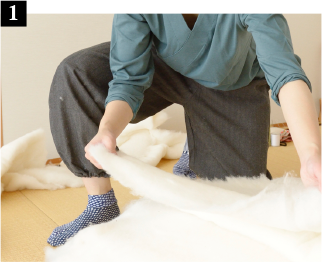
Spread specialized futon cotton over prepared cloth to create a base. Layer cotton vertically and horizontally.
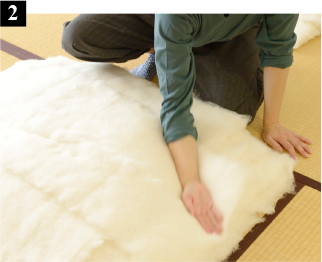
Cut the cotton in the four corners so that it is easy to fold after layering.
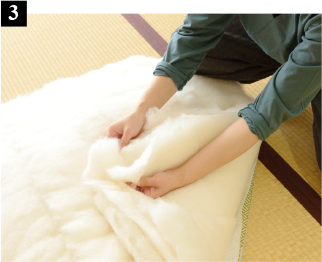
Layer the cut cotton pieces in the center.
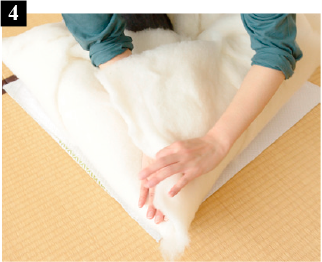
Fold the layered cotton inward until the cloth beneath it is visible.
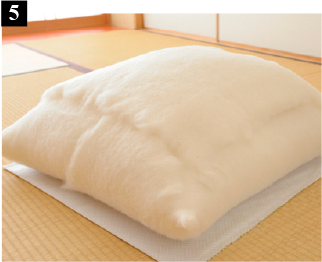
Adjust the cotton corners to shape into a square futon or zabuton cushion, then insert the prepared cotton into the cloth beneath it.